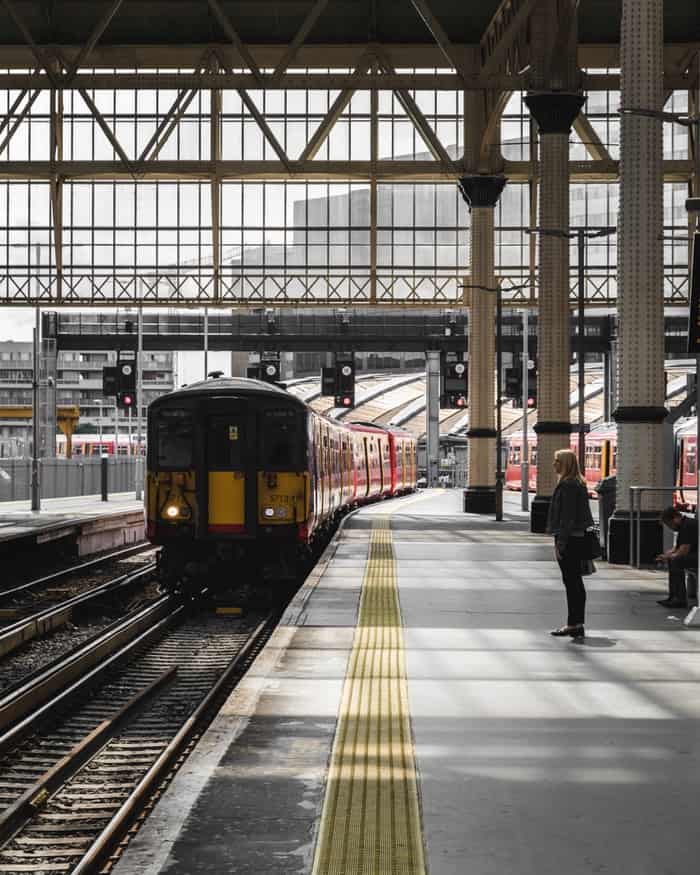Transport in London: What You Need to Know
Even though it’s roughly the size of a small continent, London is one of the easiest cities to get around in thanks to the very intricate and every widespread public transport systems that bring everything together.
Staying in an Airbnb in the outlying suburbs will save you a lot of money, and any of the following transport methods will get you in an out of the city center with great efficiency. Here is everything you’ll need to know about getting around London Town.

London – by Peter Lawrence – Unsplash
Taxi vs Uber in London
Uber saw some troublesome times in London back in 2018 when there was widespread demand by taxi drivers for the app to be banned across the British capital. A judge found the appeal to be insufficiently supported and overturned the ban, however Uber does now have to reapply for operational permits every so often.
When crunching the numbers, Uber is almost forty to fifty percent cheaper to use than a regular London black cab. That being said, Uber in London is notorious for surges, and very often you find yourself facing three to four times the usual rate because of this. So it’s neck and neck if you ask me.

by Zoe Holling – Unsplash
London’s black cabs can be hailed anywhere from the side of the road; so long as the yellow “taxi” sign is illuminated then the cab is open for business. All black cabs charge an instant fee of £2.60, after that it is between £0.50 and £0.70 per minute depending on the time of day.
Note: It is polite to tip cab drivers in London. Most customers will simply round the fare up to the nearest pound and tell the driver to keep the change.
The Tube in London
The London Underground, also known as the Tube, is thought to be the most inexpensive way to get around the city of London. Travelers pick up on how this system works very quickly and will use it to get between their guided walking tours and sight seeing all day everyday.
This intricate system involves over 270 stations used by over 4100 trains. The system is divided into zones that radiate from the city centre outwards, almost like a ripple would were you to toss a pebble onto water.

by Felix Hanspach – Unsplash
You’ll pay depending on how many zones you cross through during a single journey. Time starts when you swipe in at the first station, and stops when you swipe out at the last.
Though there are increasing options of ways to pay to use the Tube, the most inexpensive and popular one remains the use of an Oyster Card. These are purchased directly from any of the underground stations or at Heathrow Airport.
Oyster Cards involve an initial fee of £5, followed by however much you would like to keep loaded on it to use for rides.
Busses and Tramlink in London
While in the city center, one rarely needs more than the Tube to get from A to B. The short walks between stations and destinations make for great sightseeing opportunities, but the UK climate doesn’t permit these walks to always be pleasant.
To further connect the city, the same operation that brought us the Tube brings us an interconnected grid of busses and trams. These operate within all the spaces that the Tube does not, meaning you’ll rarely have to spend more than a few minutes in the freezing air while trying to get to where you need to be.

by Brunel Johnson – Unsplash
The busses and trams all run through the use of the same Oyster Card used on the underground. Each ride costs just £1.50, which will be deducted from your balance once you swipe off of the journey.
It is important to make sure you have money on your Oyster Card before hopping onto a bus or tram. Drivers and operators do not have money loading facilities on board and they cannot accept cash either.
Railway in London
There’s London central, then there’s greater London, and then there are the outlying districts that fall outside of the Underground zones. For these we use the London Railway.
This is a system of above ground trains that operate over long distances and connect all of the broader suburbs with the city center. These trains are mostly used by locals who make the daily commute into the city everyday for work, or by travelers who have opted to stay outside of the center to save money.
The railways operate out of a few stations around London, the most well known being King’s Cross, Waterloo and Paddington.

Waterloo Station – by Roman Fox – Unsplash
Thankfully one doesn’t need to queue for different tickets each time they want to use the London railway. Riders are permitted to use the same Oyster Card that they would for the Underground to gain access to any of the above ground trains.
It is also cheaper to do this as opposed to buying regular tickets every time. A regular ticket will cost £5.90 per journey, and with an Oyster Card the same journey costs just £3.10, sometimes less if the final destination is close by.
River Services in London
Perhaps what makes London’s transport system one of the most effective in the world is the fact that they extended their public transport onto the River Thames as well. Adding river services proved to be an effective way to relieve traffic in the city, and offer people an additional mode of getting between destinations.
Take note, however, that London’s river services connect the most iconic attractions in the city, so they have become extreme tourist traps especially in peak seasons. Travelers opt for full day hop-on-hop-off tickets so that they can experience everything at once under one fare.

by Carlos de Toro – Unsplash
The water busses are connected via eight stations. One can pay for their journey using their Oyster Card (provided there is sufficient funds) or purchase individual tickets when climbing aboard. Children under the age of 3 ride for free.
Planning a trip to Paris ? Get ready !
These are Amazon’s best-selling travel products that you may need for coming to Paris.
Bookstore
- The best travel book : Rick Steves – Paris 2023 – Learn more here
- Fodor’s Paris 2024 – Learn more here
Travel Gear
- Venture Pal Lightweight Backpack – Learn more here
- Samsonite Winfield 2 28″ Luggage – Learn more here
- Swig Savvy’s Stainless Steel Insulated Water Bottle – Learn more here
Check Amazon’s best-seller list for the most popular travel accessories. We sometimes read this list just to find out what new travel products people are buying.










